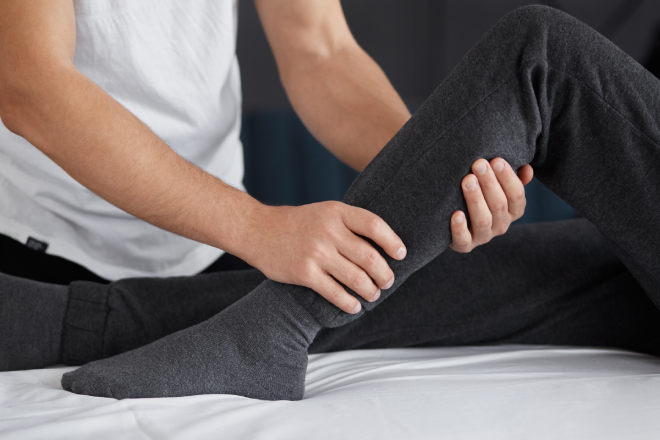The Fitness Zone

The Complete Guide To Massage Therapy For Runners (Before & After The Race)
Running is a great way to stay fit and have fun either alone or as part of a group. Trail running and swim-run duathlons have become particularly popular in recent years, and more traditional ‘fun runs’ have continued to grow in popularity. Even with the absence of in-person events for much of 2020-21, the pavements grew ever busier with people adopting new running habits. Whatever your discipline, if you work hard, your muscles will too!
For those who participate in longer distance races, the training that is necessary can cause;
- tightness in muscles
- wear and tear on tendons and ligaments
- overload of the connective tissue that supports our musculoskeletal system.
These changes tend to share one common characteristic.. PAIN!
Massage to the rescue
Massage therapy can be a very useful addition to a runner’s training and recovery regime, no matter what level they are at. Regular massage treatments during the training phase can be a great way to maintain optimal soft tissue (muscle/tendon/ligament) health.
According to Greg Lehman (Canadian researcher, physiotherapist and sports and conditioning specialist), one of the great benefits of massage for runners, and indeed athletes as a whole, is pain relief. Pain-free athletes can train sooner after a race, and, in fact, one of the main indicators for successfully reaching performance goals is the ability to remain injury (pain) free.
Before the race
Massage should never replace adequate warm-up and preparation before a run/race, but it can be a part of it. Ideally, the pre-event massage should be administered close to the event in order to be most effective. Somewhere between 60 to 30 minutes out from the start is a good marker. At this time, the runner can enjoy the benefit of:
- conserving energy while muscles and fascia are being stretched
- focusing on the upcoming race
- settling any pre-race nerves.
After the race
According to some experts, the best time to have a massage is not actually directly after the race as previously believed.
If the body is fatigued from a long and arduous race it is best to let the initial muscle recovery take place and schedule the massage for 48 to 72-hrs after the completion of the race, especially if you are partial to a deeper massage.
Studies looking at the effects of massage specifically for running have indicated that massage can help reduce pain and muscle fatigue in marathon runners, particularly straight after the race, but is less likely to improve performance times.
Which muscles should get massaged?
It is easy to understand that massaging the leg muscles is a must for runners, but to get the best out of your massage treatment it would be wise to also include the back muscles (erector spinae and QL particularly) and the muscles that are responsible for hip movement (glutes, piriformis and the deep rotators). A good massage therapist will use techniques that both lengthen and broaden the muscle fibres, some neuromuscular techniques to normalise tension in the muscles and some myofascial release techniques to address restrictions in the connective tissue/myofascia.
Australian Institute of Fitness Massage Warriors (aka graduates) have training in sports massage and athletic injury management and many of our graduates are themselves avid runners.
If you are interested in learning more about massage therapy or would love to become qualified in massage, check out AIF’s range of industry-leading massage programs here.
References: Amanda M. Heapy, Martin D. Hoffman, Heidie H. Verhagen, Samuel W. Thompson, Pavitra Dhamija, Fiona J. Sandford & Mary C. Cooper (2018) A randomized controlled trial of manual therapy and pneumatic compression for recovery from prolonged running – an extended study, Research in Sports Medicine, 26:3, 354-364, DOI: 10.1080/15438627.2018.1447469
Read more articles
Disclaimer: Where Certificate III in Fitness, Cert III/Cert 3, or Fitness Coach is mentioned, it refers to SIS30321 Certificate III in Fitness. Where Certificate IV in Fitness, Cert IV/Cert 4, or Personal Trainer is mentioned, it refers to SIS40221 Certificate IV in Fitness. Where Master Trainer Program™ is mentioned, it refers to Fitness Essentials and SIS40221 Certificate IV in Fitness. Where Master Trainer Plus+ Program™ is mentioned, it refers to SIS30321 Certificate III in Fitness and SIS40221 Certificate IV in Fitness. Where Certificate IV in Massage or Cert IV/Cert 4 is mentioned, it refers to HLT42021 Certificate IV in Massage Therapy. Where Diploma of Remedial Massage is mentioned, it refers to HLT52021 Diploma of Remedial Massage.











